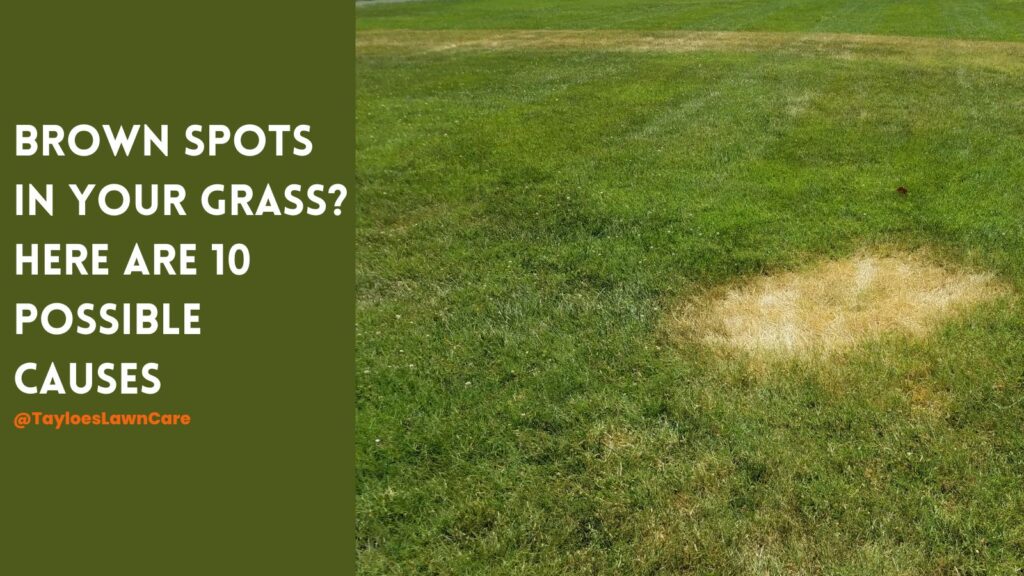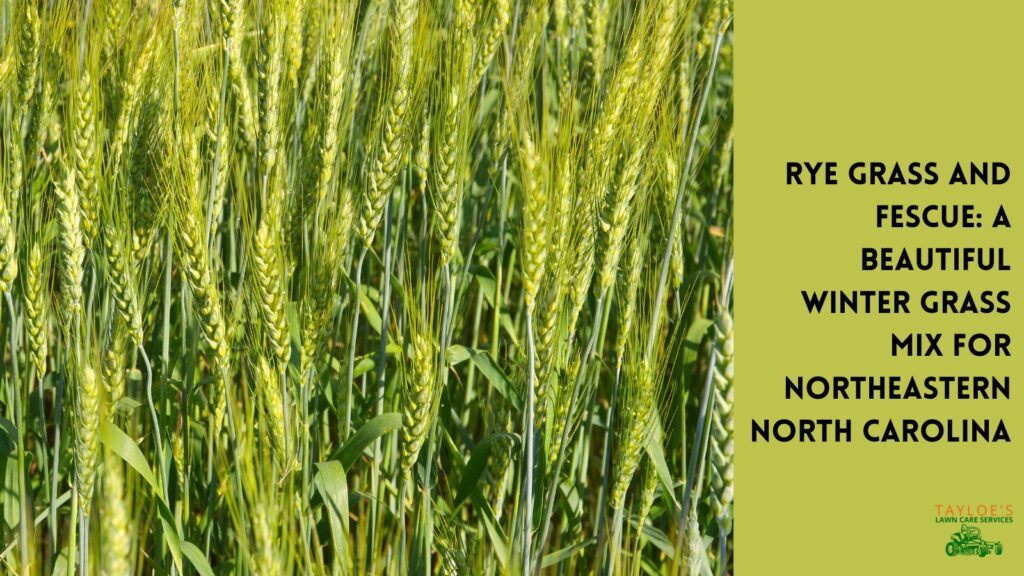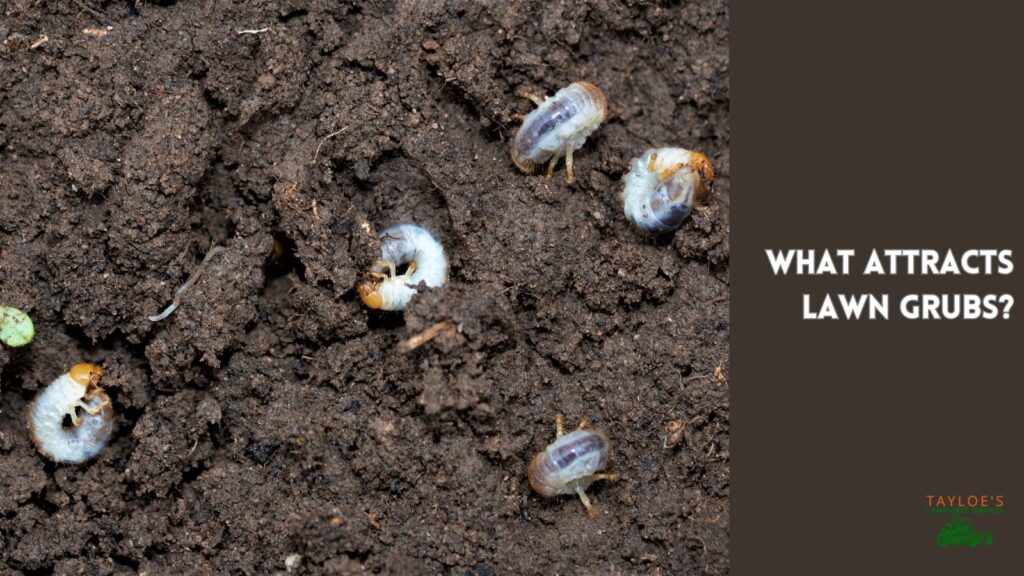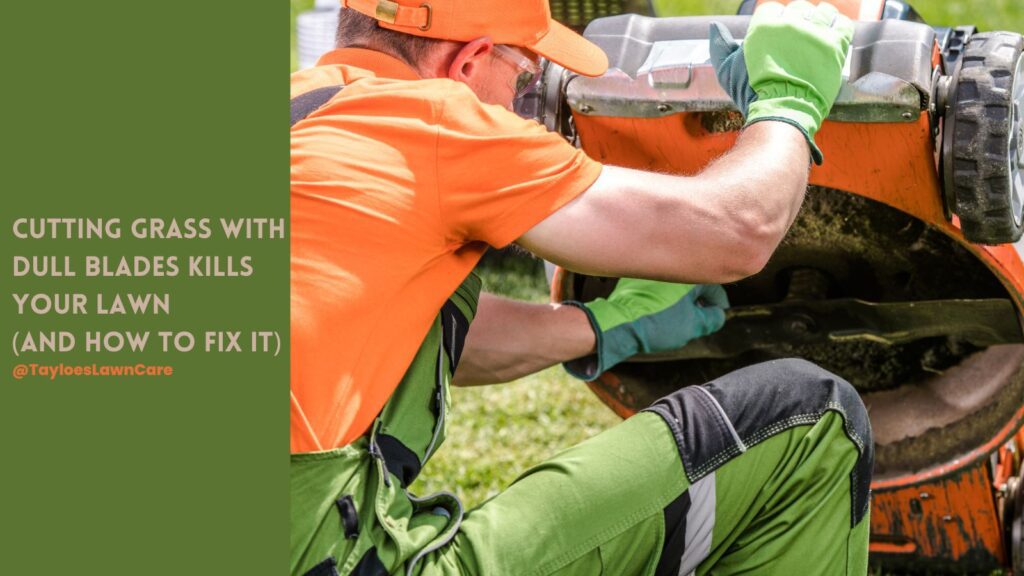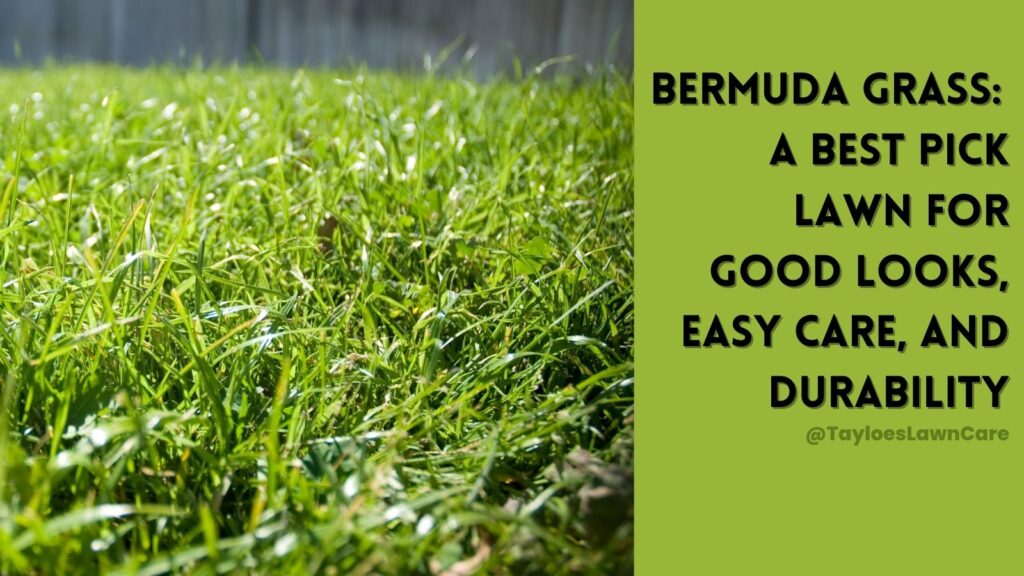Last Updated on: 24th April 2024, 03:53 pm
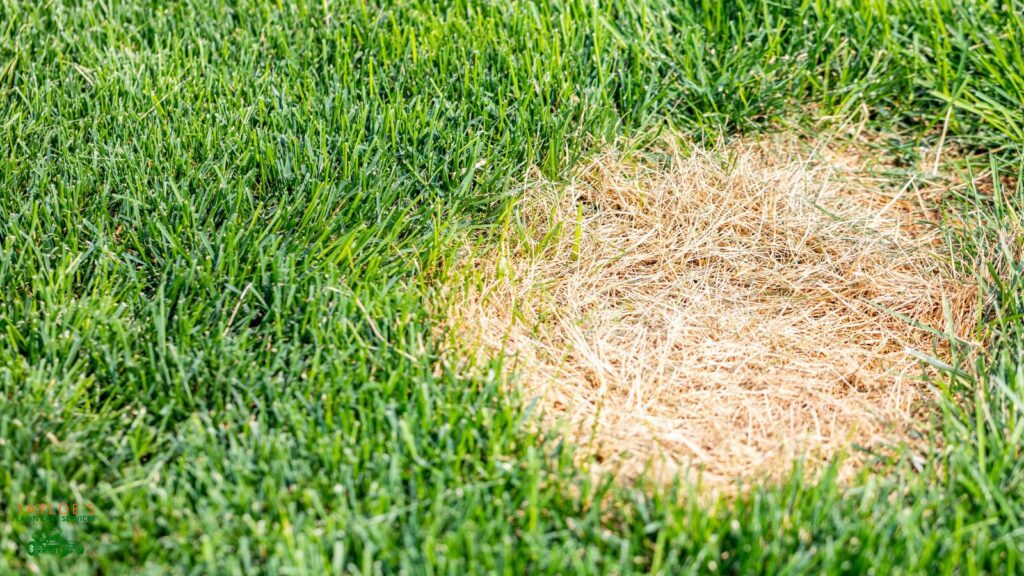
Silver dollar-sized patches are a sign of this common lawn disease.
Dollar spot fungus is one of the easiest lawn diseases to identify. Still, many property owners don’t recognize the silver dollar spot fungus patches as anything to be concerned about. As professionals providing lawn care services to clients, we’ve seen many miss the brown patches altogether. However, dollar spots can spread rapidly, especially in high humidity and moderate temperatures. They can eventually lead to widespread damage to lawns.
Early recognition and proper treatment are crucial in preventing this unassuming fungus from seriously threatening your grass.
Dollar Spot Fungus Spreads to Healthy Grass
Dollar spot fungus spreads to healthy grass through several mechanisms, each playing a crucial role in the proliferation and persistence of the disease across lawns and turfgrass areas. Understanding that it can spread is key to keeping your lawn healthy and disease-free.
Some Turfgrass Species Are Prone to Dollar Spot Outbreaks
Certain types of grass are more prone to dollar spot fungus, and susceptibility can vary depending on the specific grass species, environmental conditions, and maintenance practices. Here are some grass types that are commonly affected by dollar spot:
Kentucky Bluegrass
Kentucky bluegrasses, cool-season grasses popular for their fine texture and lush appearance, are susceptible to dollar spots, especially when not in dry soils.
Bermuda Grass
While Bermuda grass is generally tough and drought-resistant, it can still be prone to dollar spot under certain conditions, particularly when it is not adequately fertilized or stressed by environmental factors.
Fine Fescues
Fine fescues, often used in cooler climates for their shade tolerance and fine texture, are also susceptible to dollar spots. They need consistent moisture and nutrient levels to maintain health and resist dollar spot disease.
Perennial Ryegrass
Perennial ryegrass is another grass type that can be affected by dollar spot, particularly in cool, moist environments. Proper fertilization and avoiding excessive moisture can help manage disease risk.
Creeping Bentgrass
Commonly used on the irrigated turf of golf course greens, creeping bentgrass is highly susceptible to dollar spot. Proper lawn care practices are required to prevent and control fungal diseases.
What Causes Dollar Spot Lawn Disease?
Like every causal fungus, dollar spot thrives in humid conditions. Here are some things that cause the lawn fungus or worsen dollar spot severity:
Spores and Mycelium Movement
The primary mode of spread is through fungal spores and mycelium. Spores can be dispersed by wind, water, or mechanical means such as mowing, walking, or the movement of equipment over the infected areas. These spores land on healthy grass, where they can germinate and infect new areas if conditions are favorable. The mycelium, or fungal threads, can also grow outward from infected spots into adjacent turf, establishing new infection sites.
Environmental Conditions That Cause Lawn Disease
Environmental conditions significantly influence the spread of dollar spot fungus. The fungus thrives in cool to warm weather conditions, particularly between 60°F and 85°F (15°C to 30°C), and high humidity. It is prevalent in eastern NC in the late spring through early summer.
Morning dew, rain, or irrigation provides the moisture necessary for the spores to germinate and the mycelium to grow. Poor air circulation and dense thatch layers can retain moisture and create a microenvironment ideal for the development and spread of the fungus.
Poor Lawn Management Practices
Certain lawn management practices can inadvertently facilitate the spread of dollar spot. For example, under-fertilized lawns or those with low nitrogen levels are more susceptible to infection.
Similarly, irregular watering practices that leave grass too dry or excessively moist can promote the common fungal disease. Deep watering twice a week, not daily, can often minimize dollar spot severity.
Mowing with dull blades or mowing too low can stress the grass and make it more vulnerable to infection. Cutting through infected blades and then carrying spores to new areas can also physically spread the fungus.
Turf Equipment and Human Activity
Mowers, landscape maintenance equipment, and human activity significantly spread the fungus. Equipment not properly cleaned after use in infected areas can carry spores to other lawn parts or different properties. Foot traffic and animals moving across infected patches can also disperse spores further.
Prevent Lawn Disease With These Dollar Spot Treatment Tips
Control dollar spot severity and persistent dollar spot problems by taking these actions:
Use of Slow Release Fertilizer vs. Quick Release Nitrogen Fertilizer
Balancing the type of fertilizer used is essential in preventing dollar spot. Slow-release fertilizers can help. It releases nitrogen slowly over a longer period, helping maintain consistent grass health and reducing susceptibility to disease. Using slow-release formulas during growth seasons and quick-release sparingly can optimize lawn health.
Conversely, quick-release nitrogen fertilizers can cause rapid grass growth, making the lawn more prone to infections like dollar spot.
Read label directions carefully when applying any lawn treatments!
Professional Treatment of Dollar Spot Lawn Fungus
Engaging professional lawn care services can be highly effective in managing dollar spot. Professionals can provide targeted fungicidal applications and tailored lawn needs and soil type. This approach ensures that treatments are applied correctly and at the right times, significantly reducing disease risk.
Adequate Fertilization
Ensuring adequate fertilization based on the nutrient needs of your specific lawn type and soil condition helps maintain a robust lawn. Proper nutrition strengthens turf against infections and helps it recover faster from disease symptoms.
Use of Contact and Penetrant Fungicides
Fungicides can be crucial for active management of dollar spot. Contact fungicides remain on the surface of the grass and kill fungal spores that come into contact with them. On the other hand, penetrant fungicides are absorbed by the plant and work from within to kill the fungus and prevent its spread. Fungicide applications are very tricky – follow the guidance on the product label to the letter.
Cultural Practices
Perform regular aeration to improve soil structure and reduce thatch, adjust watering practices to avoid excess moisture on blades, and choose the right mowing height to prevent stress. Sharp blades are critical as a dull mower blade can injure them, becoming more susceptible to diseases like dollar spot.
Good Lawn Care Year-Round
Proper mowing throughout the year, especially during vulnerable periods such as mid-to-late fall, can prevent the onset of dollar spot. In mid-fall, prepare the lawn for the cool months by applying an appropriate type and amount of fertilizer and managing leaf wetness.
Monitoring and Removing Infected Plant Parts
Regularly monitoring the lawn for signs of dollar spot and promptly removing infected plant parts can stop the disease from spreading. Proper disposal of these parts can prevent reinfection.
Connect With Tayloe’s Lawn Care Services for Managing Dollar Spot Infections or Other Lawn Diseases
Dollar spot disease can be bad news for your lawn, especially if you miss treating it for extended periods. Living in eastern North Carolina makes this common in the late spring and early summer. We have the lawn care know-how to help you prevent dollar spot lawn disease. Connect with Tayloe’s Lawn Care today by phone or text: 252.287.3376.
Author Profile

- Deborah Tayloe is the CEO and co-founder of Tayloe's Lawn Care Services, LLC. She has a B.S.Ed and holds certificates in soil and water management and herbology from accredited programs.
Latest entries
 Lawn CareDecember 29, 2025Commercial winter lawn care is a must
Lawn CareDecember 29, 2025Commercial winter lawn care is a must GardeningSeptember 27, 2025What perennials, shrubs, and trees don’t like fall pruning (and why)?
GardeningSeptember 27, 2025What perennials, shrubs, and trees don’t like fall pruning (and why)? Trees and ShrubsSeptember 14, 2025Fall Shrub Pruning Guide (September–October)
Trees and ShrubsSeptember 14, 2025Fall Shrub Pruning Guide (September–October) Trees and ShrubsApril 22, 2025Boxwood Blight: Early identification and isolation
Trees and ShrubsApril 22, 2025Boxwood Blight: Early identification and isolation

